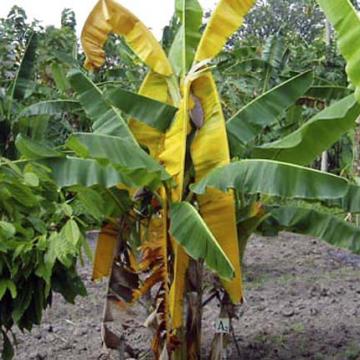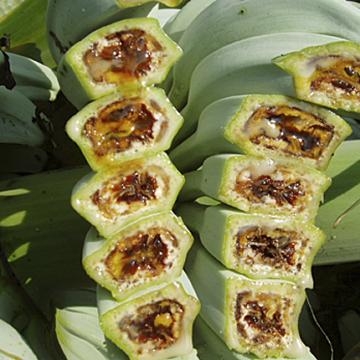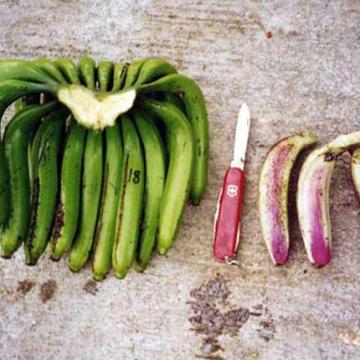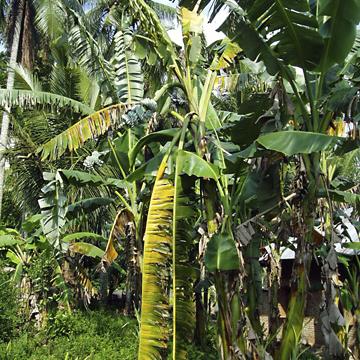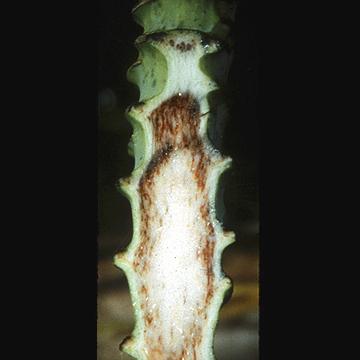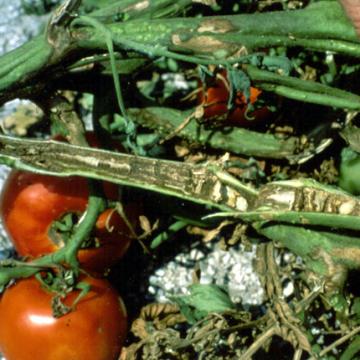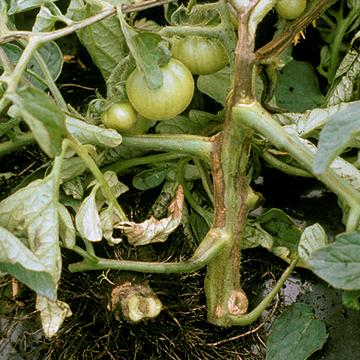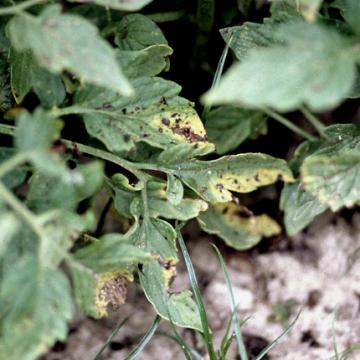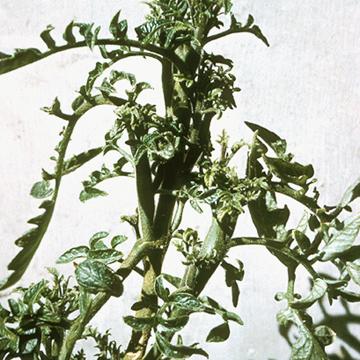DISEASE: Blood disease
HOST: Banana
Yellow leaves of dying plant.
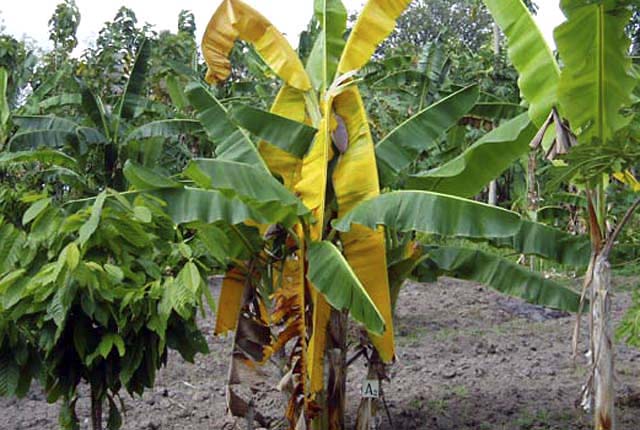
Blood disease | Banana
DISEASE: Blood disease
HOST: Banana (Musa sp.)
PATHOGEN: Ralstonia solanacearum species complex
PATHOGEN SYNONYM: Ralstonia solanacearum (Phylotype IV)
SOURCE: I. Buddenhagen
DISEASE: Blood disease
HOST: Banana
Cross sections of diseased fruit with reddish discoloration and bacterial ooze.
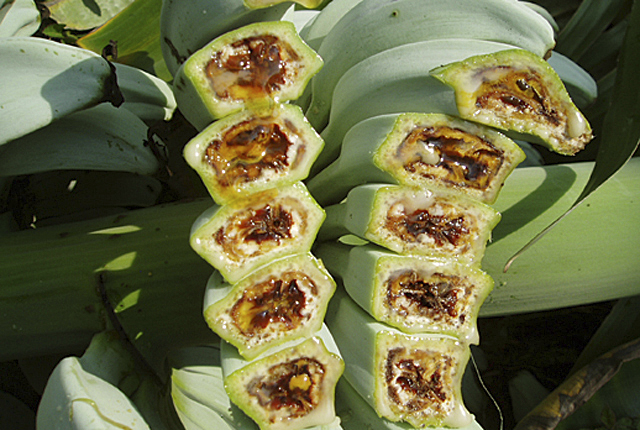
Blood disease | Banana
DISEASE: Blood disease
HOST: Banana (Musa sp.)
PATHOGEN: Ralstonia solanacearum species complex
PATHOGEN SYNONYM: Ralstonia solanacearum (Phylotype IV)
SOURCE: I. Buddenhagen
DISEASE: Blood disease
HOST: Banana
Longitudinal sections (right) exposing reddish brown discoloration of infected fruit.

Blood disease | Banana
DISEASE: Blood disease
HOST: Banana (Musa sp.)
PATHOGEN: Ralstonia solanacearum species complex
PATHOGEN SYNONYM: Ralstonia solanacearum (Phylotype IV)
SOURCE: I. Buddenhagen
DISEASE: Blood disease
HOST: Banana
Diseased plant with wilt and yellowing of leaves. The disease occurs in Indonesia and is characterized by bright red discoloration of vascular tissues. It is caused by strains in the Ralstonia solanacearum species complex.

Blood disease | Banana
DISEASE: Blood disease
HOST: Banana (Musa sp.)
PATHOGEN: Ralstonia solanacearum species complex
PATHOGEN SYNONYM: Ralstonia solanacearum (Phylotype IV)
SOURCE: I. Buddenhagen
DISEASE: Bugtok disease (Moko disease)
HOST: Banana
Longitudinal section of infected stalk exposing discolored vascular bundles.
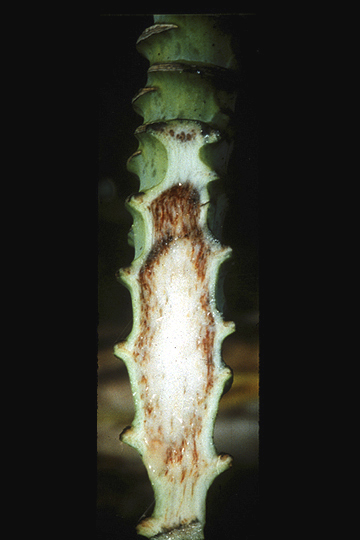
Bugtok disease (Moko disease) | Banana
DISEASE: Bugtok disease (Moko disease)
HOST: Banana (Musa sp.)
PATHOGEN: Ralstonia solanacearum
PATHOGEN SYNONYM: Pseudomonas solanacearum
SOURCE: A. Hayward
DISEASE: Pith necrosis
HOST: Tomato
Cracked, dry, hollow stems with internal necrosis.
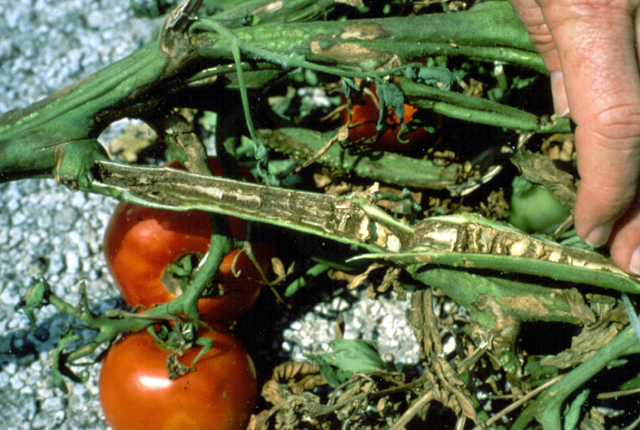
Pith necrosis | Tomato
DISEASE: Pith necrosis
HOST: Tomato (Lycopersicon esculentum)
PATHOGEN: Pseudomonas corrugata
SOURCE: A. Alvarez
DISEASE: Pith necrosis
HOST: Tomato
External necrotic stem tissues. Initial symptoms include chlorosis of young leaves. Wilting may occur when disease is severe.
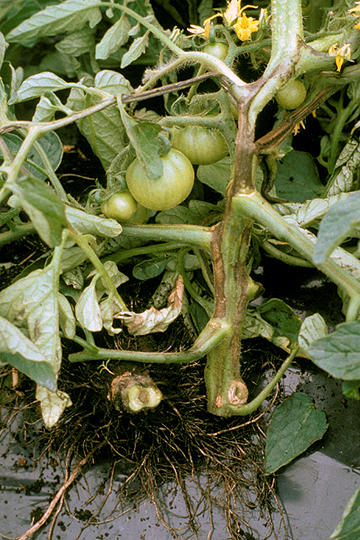
Pith necrosis | Tomato
DISEASE: Pith necrosis
HOST: Tomato (Lycopersicon esculentum)
PATHOGEN: Pseudomonas corrugata
SOURCE: K. Natsuaki, M. Goto
DISEASE: Syringae leaf spot
HOST: Tomato
Leaves with brown necrotic lesions and chlorotic margins. Symptoms vary greatly among cultivars. Some have black or brown lesions with bright yellow, chlorotic areas and others do not have yellowing.
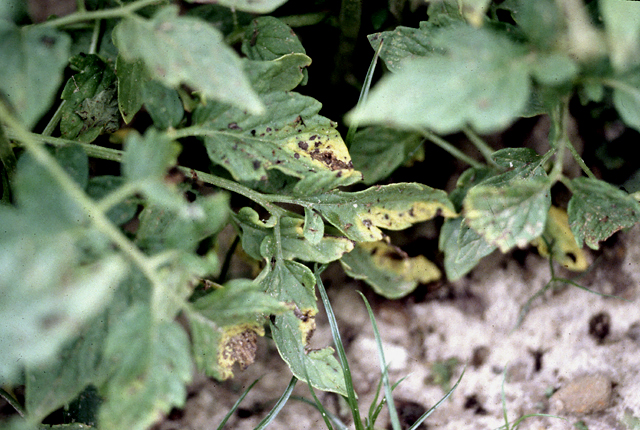
Syringae leaf spot | Tomato
DISEASE: Syringae leaf spot
HOST: Tomato (Lycopersicon esculentum)
PATHOGEN: Pseudomonas syringae pv. syringae
SOURCE: R. Gitaitis
DISEASE: Tomato big bud
HOST: Tomato
Characteristic symptoms are swollen, apical stems and stunted leaves. Apical stems are generally thickened and assume a stiff and erect growth habit. Internodes are shortened and flower buds are greatly enlarged.
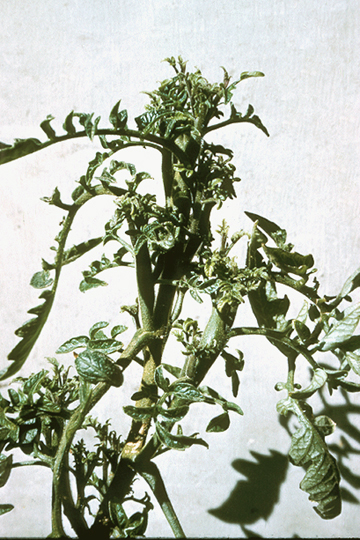
Tomato big bud | Tomato
DISEASE: Tomato big bud
HOST: Tomato (Lycopersicon esculentum)
PATHOGEN: 'Candidatus Phytoplasma asteris'
PATHOGEN SYNONYM: Phytoplasma Aster yellows group
SOURCE: D. Teakle


